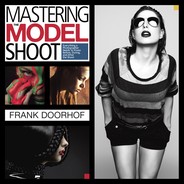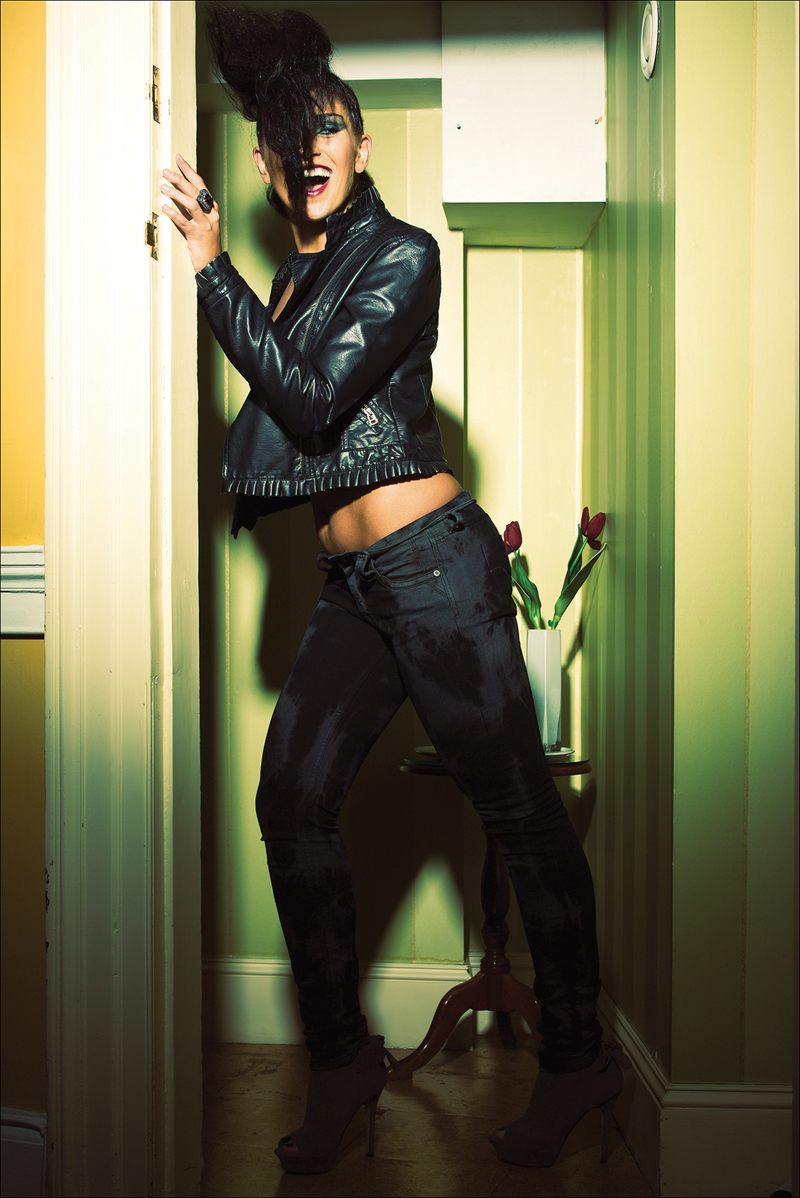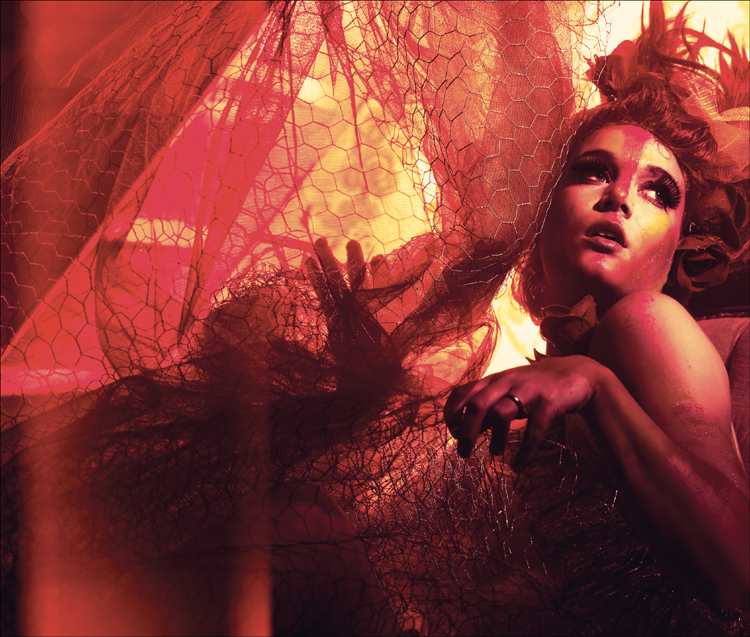Chapter One. Finding Your Models
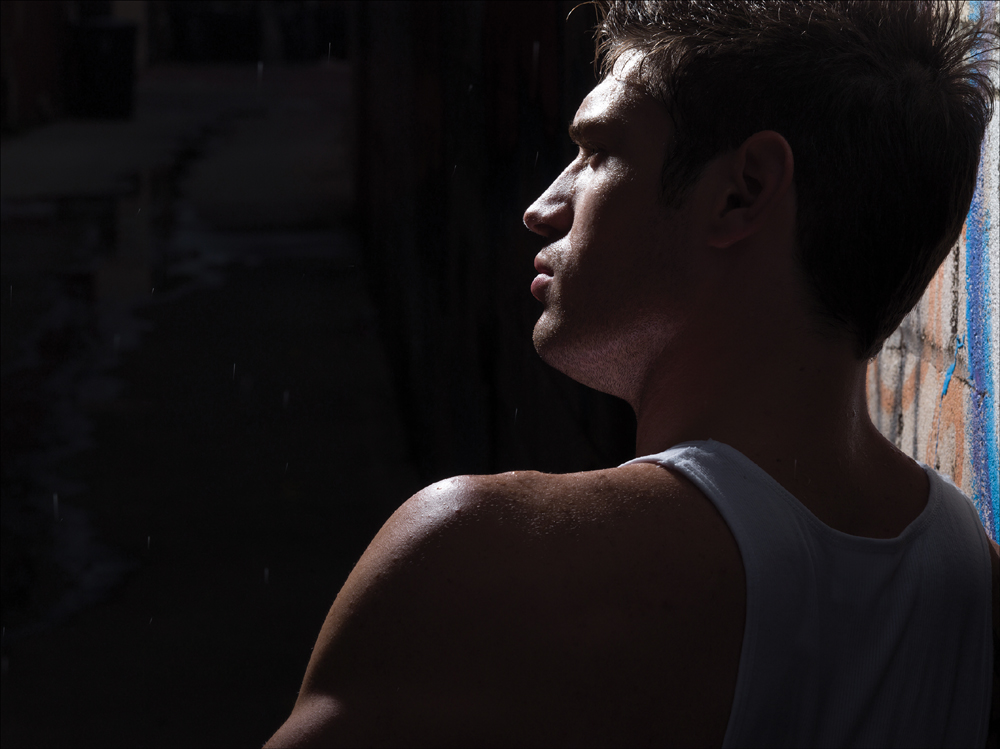
Oh my, you don’t want to know how often people ask how to do this. Of course, we all want to shoot the famous models, but let’s be real. Most of the time, we have to take it down just a few levels, but even then there are some amazing models to shoot (some maybe even better than the real top models). In this chapter, I’ll give you some examples of how I get my models and some suggestions for how to find your own.
Getting the Models to Your Studio
Let’s start simple: how do you get a model to your studio? Let’s say you have mastered your photography and you have a great makeup artist, so the only thing missing is a model. Well, you’d think that there are enough models available, but I’m afraid I have to disappoint you.
Friends and Family, or Just from the Street
The easiest way to experiment with models is if you have a great model in your circle of friends, and trust me, most of you will have someone that can model for you. One thing you have to realize is that a good model is not always a model that looks stunning. With most of the models I love to shoot, it’s about a certain factor that’s hard to explain. Of course, some of the models I use are the standard stunning girls, but some of my favorite models are not the ones you’d recognize as a model if she passed you on the street. You’ll have to learn to recognize this in people and decide if they could work as a model fitting your style/idea.
When I scout a model on the street, I realize that most will just throw away the business card I give them without ever visiting my website. So, when you scout on the street, don’t push the person, just give them a card with a phone number and website on it (not scribbled on a sticky note). Don’t use a card with a nude or lingerie image (my business card doesn’t include any images). A nice design with a clear description of your activities and website address should be enough.
Don’t be discouraged when people don’t respond. When I scout on the street, I get maybe one response for every 25–30 cards I give away. Anyway, the most important thing you need to “catch” the people you want to model for you is to impress them with your portfolio, and to build that, you need...yeah, models. So, if you don’t have anyone close to you and the models from the street don’t respond, there are other options.
Websites
There are many websites online where you can find models. Think about Facebook and Hyves (for the Dutch readers), but Twitter and Google+ can also be very good sources for finding models. The main problem with these sites is that there are a lot of people online who think that they can model, when in reality most “models” will not give you what you are looking for, or it’s too much work to find the right one.
It’s often better to find the right model via a networking website aimed at our market. The main advantage of these sites is that you can search for a model that fits your criteria—you can look for length of time modeling, fashion/beauty/glamour experience, location, TFP/paid, etc. Most models also have a short description in their profile and a portfolio.

Hatfield House workshop (Model Mayhem)
There are many such websites that will get you a network, and to be honest the list grows almost monthly. At least once every month I get an invite for yet another model site. When you want a good model, though, my advice is to go to a website that has been in existence longer, like Model Mayhem (www.modelmayhem.com) or One Model Place (www.onemodelplace.com). The reason for this is simple: those sites already have their structure, there are already a lot of models (or other team members, but this is the model chapter) on them, and you will probably find what you want a lot quicker.
Let’s first look at the way it works most of the time for me. When I look for a model, I usually post something like the following:
1. When we need new models for specific sessions
I will place a “casting call” in the forum or casting call section of the website. It helps to clearly describe what you need and your general location. I often get email from models living thousands of miles away when I ask about new models for workshops in the Netherlands, so make sure you describe that very thoroughly. And remember that sometimes people are such bad readers that, even if it’s there in capital letters, they still won’t get it. By the way, these are the models I won’t work with in the first place because they will probably also forget to show up. :-D
2. When we need a model for a certain date or event
This is often a bit trickier because while, in situation 1, there is no pressure and no problem if a model doesn’t show up, with this situation, it is a problem. Imagine being on set with your team and there is no model. That’s a big no go. So, for these models, I’m much more careful in my selection. You’ll see next how I approach it.

New York workshop (Model Mayhem)
When a model adds you as a friend
On most of these sites, you can add friends. It often happens that a great model will add you as a friend and you’ll think, “I really have to ask her to model for me.” Don’t be too quick.
If you’re still looking for TFP (Time for Print) models (we’ll talk more about this later in this chapter), it’s often wise to just wait until the model sends you a message. In most cases, this will happen a few days after she/he adds you as a friend. Now the ball is in your court and you can ask the model if TFP is an option. Because the model approached you, the chance is really big that it is and you’re both happy.
Now, if you respond right away (and I know sometimes it’s hard not to), in most cases, the model will ask a modeling fee or for travel expenses. Don’t get me wrong, there is nothing wrong with this, and I strongly believe that if a model can lift your portfolio to the next level, you should be willing to pay them. However, by waiting a little while before you contact them, it could save you some money.
First contact
Enterprise enters the space of the old earth...huh? Oh, sorry, another First Contact.
The first contact you have with the model is vital. I always look at the way she/he responds to the casting call. In my casting calls, I am always specific and ask for a few photos, like this:
“At the moment, we are looking for new models for our fashion workshops. We would like to add models that have experience with modeling and movement (like jumping or dancing) who are available on Friday and Saturday from 10:00-15:00. If you’re interested, please contact us at [email protected] and send us three recent images with at least one portrait without any retouching.”
With these small casting calls, there is actually a lot that can tell me if a model is serious. Let’s look at some pointers that I find important for an invite to a test shoot:
The first thing is that a lot of the responses will start like this: “Hi, I read your casting call and I’m very interested.” Well, these are going in my trash, although I have to admit I always check their portfolio. But, if they don’t send me three images as requested, it often means that the model is not someone I can build on. In other words, models often respond to everything that’s out there by copying-and-pasting.
You will also get a lot of responses that will include the images, but still ask on which days the workshops take place. Trust me on this one, if the model asks this in her first contact, it’s very likely that she will not show up for the shoot or workshop you’re booking her for, because it clearly states it in the casting call.
Now, if I get the images I’ve asked for and we’re talking, she/he will be in my list of models and I will start my selection. I know this sounds incredibly harsh, but trust me when I tell you that the number of models who won’t show up on the date you agreed upon is huge. In fact, we always book at least three models if I only need one. Since I’ve become much more strict with my first screening, I have to say that the “no shows” have become less and less.
Sometimes you’ll get a response like I just mentioned, but when you look at the model’s portfolio, you’ll say, “Wow! Oh this is amazing! Wow! Wow! Wow!” (yeah, I know it’s a bit over the top). In this case, I’ll start an email conversation with the model and try to get her for a test shoot, but I will be aware of what can happen. And, in all honesty, sometimes it turns out that the model works out great, so don’t take these rules as the “golden rules.” They are there to bend and break, but give you a guideline.
The Polaroid/unretouched image
Getting recent images is really important. Imagine booking a beautiful 18-year-old model, but when she walks on the set, she is 40 or so. Okay, so that won’t happen very often, but it often happens that the model that enters the studio is not what you saw in the pictures she/he had online. It can be that a model gained or lost some weight, changed her hair color or length, or any number of physical changes. This can be a disaster when you, for example, organized a shoot for a girl with long red hair and she walks in with short white hair. Yeah, that sucks.
So, how do I make sure I get the model I want? Again, I ask her to send me three shots: (1) full body, (2) three-quarter view, and (3) a head shot (or, depending on the shot we’re going to do, I’ll ask for a bikini shot if we’ll be shooting lingerie). I also always ask for one unretouched image of her face. I don’t care if it’s a cell phone picture, a professional shot, or a Polaroid, but it has to be a recent unretouched image, right out of the camera.
About 99% of the images you see online are retouched to varying degrees, from a lot to a little. Even if you’re a Photoshop guru like Scott Kelby, for example, it’s important to know how your model looks without any Photoshop. Simply put, for some assignments it’s not preferable to do a lot of retouching, while for other assignments it’s no problem at all. You can save some time by hiring a model that’s already a little “pre-Photoshopped” (meaning she has good skin and hair from the start—those are the hardest things to fix later in Photoshop).
Professional models or not
Even on the specialized model websites, you must be very careful with the models you book. Being a model is popular, and everyone thinks they can be a model. This makes it much easier to find what you want, but it also makes it a lot more difficult to get what you need. Yeah, I know that sounds weird, so let me explain:
The models that are on the sites vary in their degree of experience, and some even lie about it. It’s also difficult to judge a model on a portfolio that’s online. I’ve done sessions with models with great online portfolios, and given them great images I also love, but to get the images was terrible.
Some models pose very naturally and the good images flow out of your camera, but some models have stunning looks, yet have to be coached to the limit to give you one good image. This can be a real problem, especially for beginning photographers. It would be a good idea to plan a test session before the photo shoot where you invest your money. I’ve heard so many stories about photographers renting great locations, getting a team, and getting a stunning looking model, only to find out that on the day of the shoot the model posed so stiffly that, in essence, she destroyed the entire day.
This is, of course, a worst-case scenario. In most cases, you can get a pretty good idea about a model from a website and they will perform the way you expect, maybe even better than expected. Well, that is, if they show up.
Good examples of the difference the right casting of a model can make are the workshops we did in Austria in 2012 and 2013. In 2012, it was the first time this organization had done the workshops. They did their best to get some nice models from a starting agency and they borrowed some dresses, all in all not bad. I got some nice shots from that workshop, but nothing that would really fit in one’s portfolio (if you are really picky). In 2013 however, they used one of the top modeling agencies and a dedicated stylist. The difference is day and night. When I got back from teaching these workshops, I could literally update half of my portfolio.

Orlando photo shoot (Model Mayhem)
A lot of people don’t realize the importance of a good team (we’ll talk more about the team in Chapter 4) during the photo shoot, but trust me on this one: if you invest some time, and probably money, in finding a really good team, you will be stunned by what you can actually do. Models that model for a living just know how to pose, and they don’t nag when it’s a bit too hot (both the shots from Austria were taken when it was about 95° F [35° C], and trust me, the clothing was hot). In the end, you can really see the difference in your work, and I always say, “Why not go from okay to wow!?” A good team does this for you.
The trade-off of using free models
One of the worst things you can experience during a photo shoot is having the model not show up, and trust me, this happens a lot. I’ve heard stories from my students that approximately 40% of their shoots are cancelled because the model didn’t show up or canceled the shoot one day in advance. I have to say I’m probably very lucky, because I hardly have any problems with all the models canceling, although recently, when I had planned a shoot in Orlando, I was sitting in a hotel room with an assistant, MUA, and stylist, and the model called to say she could not come (about 30 minutes after the time she should have been there). So, yes, it happens to everyone. How do you solve this problem?
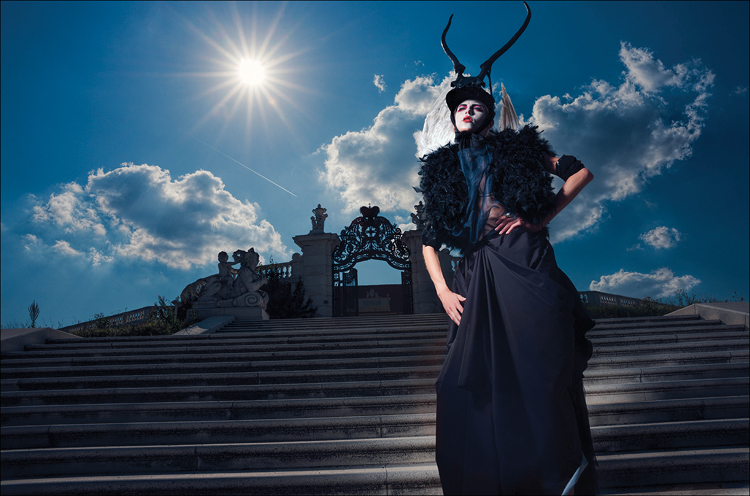
Austria workshop
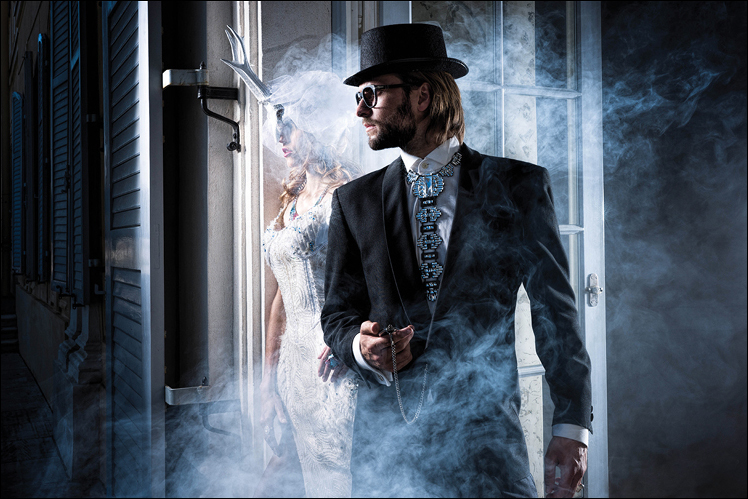
Austria workshop
Dublin workshop (Model Mayhem)
When I shoot in our studio, I just cancel the shoot, send everyone home, and am disappointed. But, when I arrange a location shoot, I always try to get three models, taking into account that I will probably end up with two. Believe it or not, this is often the case. So far, I’ve never had all three models show up during a shoot, but I’m still very careful with my selection and I always ask the models to meet up with us the day before the shoot. If they don’t show up then, I always have at least one backup model.
I’ve done shoots in many countries, and it’s not a trend only in the Netherlands, Belgium, or the U.S. It seems to be a worldwide problem, and it is something you really should be aware of. Add the cost of three models into your calculations for any assignment you do (without saying there will be three, of course), so when all the models do show up, you will have a nice surprise for your clients (and be surprised yourself).
With all other the options that are online, there is a big chance that a model simply won’t show up. This is one of the reasons we often use agencies, so let’s look at those and some other solutions now.
Modeling Agencies
While there are no guarantees that a model will show up, it’s a good idea to approach a modeling agency. They will often charge you a lot more for your models, but you do have the guarantee you will have a good model that shows up. Although sometimes it isn’t the model you wanted, they will send a good replacement. I’ve had some great experiences with models via agencies, where I described a model and got exactly what I wanted the next day. To be honest, it was kind of freaky, because both the male and female models were exactly what I described and wanted.

Florida agency models through Kelby Training

Marie
Other Options
When I started out, I had to hunt down my models. When I got a nice, solid portfolio, I started getting emails from models offering to work for me. The nice thing about this is that you can often work with those models on a TFP basis (Time for Print; more on this in a minute). The other advantage is that the models are often very motivated to work with you, and are willing to invest in the session by searching for good locations, styling, and clothing. Working with a team is always better than arranging everything yourself. As I said before, though, a real model should have something special.
I’m very big on this issue because I almost missed one of my best models. I thought she didn’t have what it takes to be a model. But, she kept sending me messages (you could almost call it stalking) and begging me for a test shoot, so I finally decided to just let her come and give her a chance. Her first images were not that good and she realized this. She took a few minutes, then came back to the set and blew me away. I decided to invite her over for a few more sessions and, from there, she grew and grew.
Now, a few years later, she is without a doubt one of my favorite models, with some great ideas. And, because she really wanted to learn, she was always willing to come over for shorter sessions—sometimes less than an hour—just to get more experience. Well, she not only grew to be one of my favorite models, but she has gotten some very nice publications, worked with some great photographers, and has a killer portfolio. So, keep an eye out for hidden gems, and you might discover the next “top model.”
TFP or Paid
This is something you should always be careful with. If I invited every model that sends me a message for a TFP session, I would never see my family again, never get time to work, and would not even be able to work on the images. You’ll have to make a selection—remember that you are judged by the quality you put out there, and your model is part of that quality. You can make a stunning technical shot with perfect light, a great location, and more, but if the model is not performing, people will still judge you on the model and an image that doesn’t work. Also, if the models in your portfolio are high quality, you’ll attract the same kind of models and they’ll be willing to work with you.
How Do You Get There?
Everyone has to start with TFP work, I believe. Use it to start learning the skills you need to light a model properly. Don’t yet use the images for our portfolio (unless you get some killer shots), but when you think you can shoot a pretty good image, pay a model. Yeah, you read that correctly. Pay a model. In a world where photography is often regarded as being free, and where I always fight for the fact that photographers should be paid for building a model’s portfolio, I’m now saying pay the model? Well, this is a tip for people starting out.
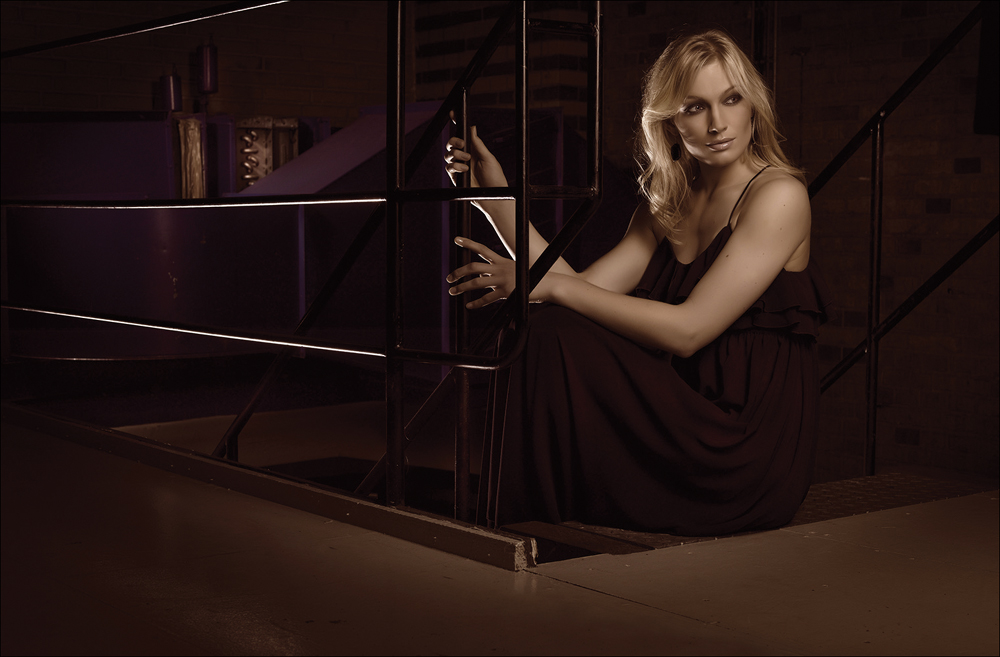
Copenhagen workshop (modeling agency)
When you are willing to pay a model, you often get a better quality model than you get when you use TFP models. So, there are no good TFP models? No, there are a lot of really good models out there working on TFP, however, the better the model, the better the results should be for him/her to model on TFP. By shooting a few models that are helping you improve the quality of your output, you will lift yourself to the next level and you’ll find that more models are willing to work with you on a TFP basis. This way, you can grow even more.
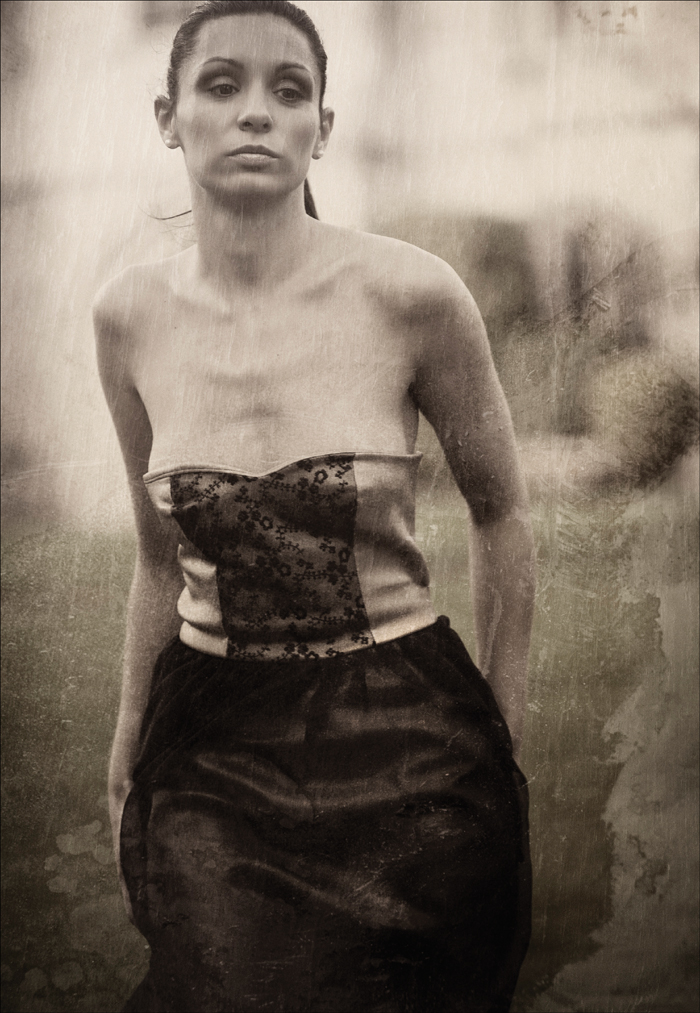
Cork (Ireland) workshop (Model Mayhem)
At a certain point, it will be time to invest in locations, styling, MUAs, etc. We, as photographers, should always try to improve ourselves and improve our portfolio. As a result, you’ll get more and more messages from models that want to work with you. Now, you have to be careful. Don’t invite everyone over. Be selective. You don’t have to shoot three or four TFPs a week. As a business option, you could offer some photo shoots to the models you think are interesting, but whom you don’t want to work with for free—start out by charging just a little bit of money, and it will build up to something more. You just have to go with the flow.
Model Releases
Photographing people is my passion. Capturing a character can be an amazing thing, but as with most people, characters or situations can change. As a photographer of people, therefore, it’s very important to make sure you don’t get into trouble, and that’s easier than you might think. A lot of the questions I get are about contracts: How do we do that? How do I approach this issue, which is a bit uncomfortable for some people? In reality, however, it’s very easy and never uncomfortable.
When you shoot a person, you are using their portrait or their appearance for your work, and you have to realize that people have rights. You can’t, for example, use the image to hurt the reputation of that person, or make the person look ridiculous. Now, that’s probably not something you will do, but there’s more. It could be that the person’s situation changes or that his/her opinion about your shot changes. That’s why it’s important to have a model release (we never call it a contract).

What’s in a Model Release?
Model releases vary a lot, depending on the situation. Let’s talk about what’s in the model release I use that could be of interest to you:
Only I can change the images
It happens sometimes that a model loves an image, not as I shot it, but as a portrait. It’s absolutely horrifying to see what some models see as a great crop. That’s the reason why, in our model release, it says that only I can make changes to the images.
Use of the images
Images are, of course, shot with a certain goal in mind. For most models, it’s for use in their portfolio or for an agency. For the photographer, however, it’s often also for promotion of his/her work. Remember that if it says in your model release that the images are only for portfolio use, you leave out a lot of options for yourself. That’s why our model release contains the following options:
• For the model: online and print portfolio, their agency, and websites with non-commercial status.
• For the photographer: all forms of promotion (website, print, exhibition, articles in media, etc.), and use for commercial activities.
For commercial activities, you can add different options, like: publications whose print run is below a certain number, or publications that don’t pay or pay below a certain amount. In our model release, however, there is a clear statement that the good reputation of the model can never be hurt, or the content of the image as known by the model cannot be changed, for example, to suggest another meaning.
But I Know My Models Very Well, So Why Bother?
That may be true, but things change. Let’s say you have a killer shot that’s winning you awards everywhere you show it; it’s the prime sample in your portfolio and you love it. However, your model is posing in lingerie, which isn’t a problem right now. But, what happens if, a few months from now, just before you have your first exhibition with this piece as your main attraction, your model gets a new boyfriend who hates that image and doesn’t want the world to see his new girlfriend in lingerie? Remember that, if your model starts protesting against the image, you may be in for a whole lot of trouble and stress. To be sure this doesn’t happen, you have to use a model release. It’s a very simple procedure and allows you to be 100% sure that you can use the images you have without a problem (although nothing is 100% sure).

So I Never Have to Stop Using an Image?
Not necessarily. Above all, we are all human and our opinions can change. Being a photographer is a social profession, and you as a person will have to evaluate your options. Say the model in the above scenario has a problem with a certain image, but you have a signed model release. You could always consider taking the image offline and not using it anymore, not because you have to, but simply because it’s the human thing to do. When you have a signed model release, however, this is always your choice and you can’t be forced.
What About Shooting in Public?
This is a difficult issue. In most countries, it’s not a problem when you shoot a scene where a “model” is part of the whole and not the main subject of attention. However, when the attention of the viewer is clearly drawn to the subject, it’s wise not to think, “She/he will never find my website.” It’s better to just ask if the person would sign a model release. You can carry around a few smaller model releases that you can use, or you can use an iPhone or iPad app, for example. We use the Easy Release – Model Release app (from ApplicationGap), at the moment. The good thing about this is that you always carry it with you and it stores the contracts on your device, plus it directly sends the release to your model.
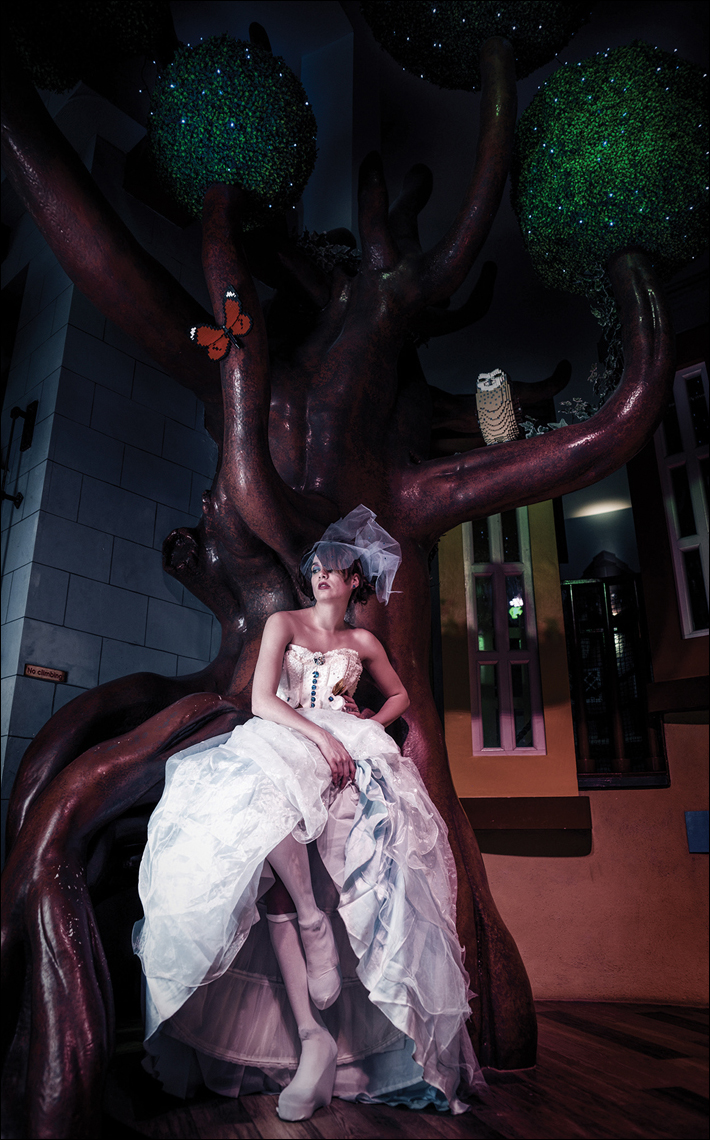
Makeup Artist (MUA)
When you start out as a photographer, you probably won’t think about a good MUA, but these are, without a doubt, maybe the most important part of your shoot. Without a good MUA, the model will probably need more Photoshop work, and the look of the shoot will not be maximized. It is much more difficult to get a good MUA to work on TFP, and that’s not weird. They are often in high demand and can choose their assignments, including working with much more experienced photographers (depending on their skills, of course). So, with MUAs, I’m also more inclined to at least pay them for the materials they use (and trust me, that can be more than you think). But, working with a good MUA will lift your work to a whole different level—you’ll never want to go back.
Stylist
Models = plenty
MUAs = enough
Stylists = oh my
Maybe it’s just me, but the team member that is the most difficult to get is a good stylist. These people are definitely the pride and joy of every photo shoot they work on. They take care of the clothing, the mix of looks, the ideas on set, and, well...in short, a good stylist makes sure that everything looks jaw-droppingly good. All the details you miss, they will add, and much, much more. I always call them the “do it all people” in a photo shoot. Since stylists are not found on every street corner, be prepared to pay money for them, but they really are worth it.
Conclusion
A good model will make a photo shoot a success. A model that doesn’t show up will cost you a lot of money, and can harm your reputation if it happens too often.
Make sure that you are careful when selecting a model, and don’t be afraid to sometimes pay for a model for your own portfolio. A good model can really lift you to the next level and, in the end, make it possible for you to start earning money from your photography. But, don’t pay every model. When we agree on TFP, it’s a TFP session. I’m not paying for travel expenses, clothing, etc. (although you will have to decide this for yourself because, in some situations, it makes a lot of sense to do this). And remember that building a good, solid relationship with several models will make your business stronger.
There is nothing bad about working with the same group of models, but make sure you always do something new and exciting, and don’t repeat the same thing. The main advantage of this approach is that you can be very creative, because you know each other and can work better that way.
As with all professions, you need to invest in your work to make sure you are getting the bigger/better assignments. So, don’t be afraid to pay people for work if they can lift you to a higher level. And, always remember that if they like you and love your work, you will probably now have a team that will work on TFP with you on certain occasions, or even better, tell clients about you and maybe land you a great job.
